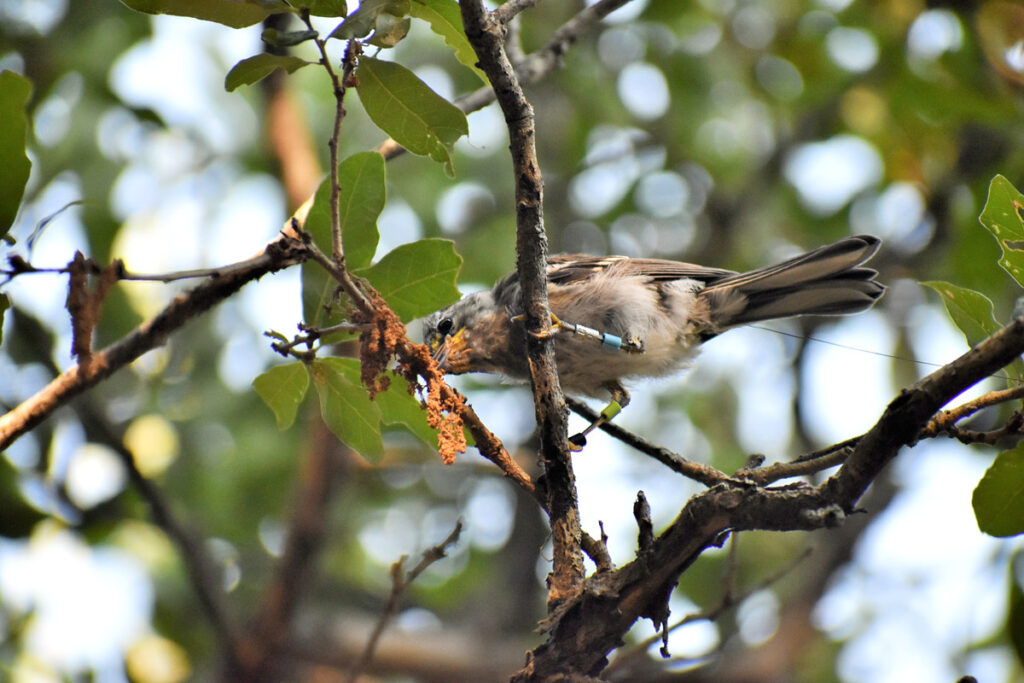Ever since I was a child I’ve had a passion for wildlife conservation, especially endangered species. It was almost too good to be true, then, when I started my thesis work on an endangered avian species that was endemic to Texas, the Golden-cheeked Warbler. The University of Illinois provided this research connection in collaboration with the Fort Hood Military Installation, which holds one of the largest Golden-cheeked Warbler populations. We wanted to study a then little-known area of their breeding ecology: the post-fledging period.
We knew that for many songbirds, the post-fledging period typically has lower survival than other life stages, sometimes causing population bottlenecks. One unusual part of Golden-cheeked Warbler biology is that they breed particularly early in the year for a migratory songbird, typically around mid-March to late May, when some trees and plants are still leafing out or blooming. Additionally, they are tightly connected to the juniper-oak forest matrix in Texas since they use the bark of mature juniper trees to construct a majority of their nests. We weren’t sure if that would or could play a part in fledgling survival or habitat use, so I set out to track fledglings right after they left the nest and document their behavior, habitat use, and survival for the first month out of the nest.
Interestingly enough, most fledglings survived the early period after fledging. Predators seemed to be the biggest threat, although still small in comparison with other songbird species. Additionally, Golden-cheeked Warbler fledglings were almost always found in the same kind of habitat as the adults: mostly juniper with a good sprinkling of oak trees. Most interestingly, fledglings tended to switch foraging substrate from junipers earlier in their life to oaks when they were older (~3 weeks). This is contradictory to previous behavioral studies on adults, who do the exact opposite. It’s unclear why fledglings use oaks more often as they age, but we at least found that breeding and post-fledging habitat are extremely similar at Fort Hood. We could safely assume that Fort Hood provides a large suitable patch of habitat for the breeding season of Golden-cheeked Warblers in its entirety; however, other smaller patches of fragmented habitat will need more protection, especially in a constantly urbanizing and agricultural landscape in Texas.
The results of this study were published in the Journal of Field Ornithology:
Trumbo, E. M., M. P. Ward, J. N. Macey, N. A. Grigsby, J. D. Brawn. 2021. Post-fledging ecology of endangered Golden-cheeked Warblers. Journal of Field Ornithology 92:417-430. https://doi.org/10.1111/jofo.12382


